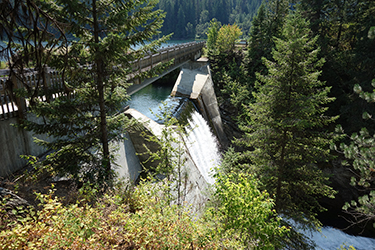|
Subscribe / Renew |
|
|
Contact Us |
|
| ► Subscribe to our Free Weekly Newsletter | |
| home | Welcome, sign in or click here to subscribe. | login |
Environment
| |
 |
September 28, 2017
Survey: Environmental Science Associates
Specialty: SEPA and NEPA compliance; natural resources; water resource management; restoration planning and design; parks, trails and open space; cultural resources; environmental permitting and policy
Management (local): Margaret Clancy, Pacific Northwest regional director; Molly Adolfson, Pacific Northwest water leader; Teresa Vanderburg, Pacific Northwest biological resources and land management leader
Founded: 1969
Headquarters: San Francisco; Northwest offices in Seattle, Portland and Bend
2016 revenues (Northwest): $14 million
Projected 2017 revenues (Northwest): $15 million
Projects: Burke-Gilman Trail “missing link” EIS for Seattle Department of Transportation; Mill Pond Dam removal on Sullivan Creek in Pend Oreille County for Seattle City Light; Seattle Center Arena renovation EIS
Margaret Clancy, vice president and Northwest regional director, answered questions about her firm.
Q: What sectors are most active? Has the nature of your work changed?
A: We have been working on a number of multi-disciplinary projects involving water, energy and transportation infrastructure. We supported the NEPA review and permitting processes for the Seattle Multimodal Terminal at Colman Dock project and prepared the EIS for the Energize Eastside project, which would provide 18 miles of high-capacity electric transmission lines from Redmond to Renton. We are also working with Seattle Public Utilities and King County on the Ship Canal Water Quality Project, which is implementing parts of SPU’s long-term control strategy for managing combined sewer overflows.
The nature of our work has not changed dramatically in recent years, but we seem to be doing more work in the built environment these days; a few years ago we were doing loads of natural resources-related work in the Puget Sound nearshore environment for example.
Q: Where do see room for growth?
A: The transportation sector is strong right now, especially with the passage of Sound Transit 3. There is also going to be quite a bit of work associated with WSDOT’s fish barrier removal program. We are involved in a number of floodplain management projects and expect to see quite a bit more of this work as local governments try to address flood risks, habitat restoration and farmland preservation. Our airports group is also very busy with air, noise, stormwater, habitat management and NEPA studies at both regional airports and major hubs.
Q: Will regulatory changes affect your work or your clients following the election of the new president?
A: Yes, the new administration has proffered some fairly significant changes to regulatory programs that are fundamental to our business — the Clean Water Act, the Endangered Species Act and NEPA to name a few. Viewed in a positive light, these changes might reduce regulatory complexity and help streamline the permitting process for important infrastructure projects, which would benefit many of our clients. It’s not clear though whether such benefits would outweigh the risks to water quality, air quality, species, habitats and other things our employees and clients care deeply about.
Funding cuts to regulatory agencies and key environmental programs such as the National Estuary Program will undoubtedly hurt our business and the administration’s reluctance to acknowledge or address climate change is going to hold our industry back instead of pushing us forward to tackle the unprecedented challenges that climate change presents.
Q: ESA just opened an office in Bend. What kind of growth are you seeing in that region?
A: We are very excited about the new Bend office. We recently completed a master plan for the Riley Ranch Nature Reserve, a new 180-acre regional park on the Deschutes River (under construction now) and we are getting underway on another master plan for the Bend Parks and Recreation Department at Alpenglow Park. Having an office in Bend will enable us to better serve clients in central and southern Oregon; that’s our main focus right now in terms of regional expansion.
Q: What are you working on that’s interesting or challenging?
A: Well, the Seattle Center Arena renovation project certainly falls into this category, especially considering its high profile. We are also working with the PCC Farmland Trust on the Farming in the Floodplain project, which is funded through the Floodplains by Design initiative. Our work involves analyzing the effects of proposed changes to flood and hydrology systems on agricultural viability in the Clear Creek area of the Puyallup River Basin. It is interesting because it requires working collaboratively with agricultural landowners and trying to advance progress toward a collectively agreed upon plan for the Clear Creek area that supports a thriving agricultural community, while also meeting fish and flood interests.
Other Stories:
- Working around an unworkable Voluntary Cleanup Program
- Survey: Farallon Consulting
- Survey: Herrera Environmental Consultants
- Survey: Aspect Consulting
- Fish barrier fix: Take a cue from Henry Ford
- Is Seattle’s Living Building Pilot Program ready to take off?
- Kalama methanol plant will fight climate change
- Water for rural development: tapping the Hirst ruling
- Going below the surface for better watershed health
- 30 years and beyond: caring for landfills post closure
- Survey: Golder Associates



